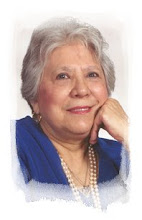
 Again, I would like to Welcome MaAnna Stephenson to my blog. As you may know by now, MaAnna is the author of the Sage-Age - Blending Science With Intuitive Wisdom.
Again, I would like to Welcome MaAnna Stephenson to my blog. As you may know by now, MaAnna is the author of the Sage-Age - Blending Science With Intuitive Wisdom.I guess I was a little early with my first post for MaAnna, and probably am a little earlier than I should be with my second post for MaAnna, but I hate being late. So today, I am posting an except from Chapter 5 of McAnna's Book THE SAGE AGE, and one from Chapter 10:
Intuitive Excerpt – Chapter 5 – Metaphysics – the Study of the Intangible World - Metaphysics...and Science Excerpt – Chapter 10 – Cosmology – The Study of the Infinitely Large
Historically in the West, the term metaphysics was first applied to a compilation of philosophical writings by Aristotle. Several centuries after his death, scholars at the library in
Aristotle himself called these writings “first philosophy.” This refers to the first cause of being. His comments on metaphysics concern an understanding of the nature of being for being’s sake, or simply because something exists regardless of cause. Aristotle’s view, much like ancient Eastern philosophy, states that wisdom requires knowledge gained beyond reason and sense experience. In other words, Aristotle expressed two sources of knowledge, both rational and intuitive. In these works he also discussed unity and dualism.
The study of metaphysics in ancient
Today, the term metaphysics has been applied to several disciplines including the study of the intangible world as the source of being of the physical world. This study also includes various philosophies concerning the fundamental basis of reality, being and knowing. As the science of quantum physics delves deeper into the nature of matter and energy, it seems to be blurring the line between the tangible and intangible world. While it seems to give a peek into the underpinnings of reality, physicists like David Bohm remind us that the real source of physical reality is ultimately non-measurable in physical terms.
Metaphysics, then, is the abstract philosophy which is best suited to deal with that which is just beyond the physical. But, because it is abstract, it is not completely bound by the constraints and limitations of reason and logic. And, there’s the rub that grates like sandpaper between the study of physics and the study of metaphysics. It is like the thinker thinking on thinking itself.
Plato described Knowledge as a subset of Truth and Belief, which was an idea still close to the common roots of philosophy shared with ancient Eastern traditions. Kant described knowledge as coming from two sources, the mental and the observed, which is the definition still used by modern Western societies. This presumption concerning knowledge led to a philosophical crisis in the early days of quantum physics. Since so many other modern sciences are now based on quantum principles, the same philosophical dilemmas hound them as well. In Philosophy of Science: an Introduction, author Paul Durbin states:
If we understand by metaphysics the belief in principles that are non-analytic, yet derive their validity from reason alone, modern science is anti-metaphysical. It has refused to recognize the authority of the philosopher who claims to know the truth from intuition, from insight into a world of ideas or into the nature of reason or the principles of being, or from whatever super-empirical source.1
We must accept that today’s scientists are actually metaphysicians whose knowledge is derived from their own unique subset of truth and belief as well as learning and experience, and include those who refuse to acknowledge the validity of metaphysical philosophy.
According to Plato, our beliefs impact what we can know as much as ultimate truth does. This radically impacts our knowledge concerning the nature of reality. In the next few sections we’ll explore the role of perception, conception and projection in how we come to understand reality. We’ll also explore modern ideas concerning the role of consciousness and how we view information.
Dualism - One Understanding Itself
The concept of dualism has been widely popularized in the symbolism of Yin Yang. It is a visually striking contrast of opposites that can be conceptualized without further explanation. But, as you begin asking questions about it, the depth and mystery encapsulated in the form becomes evident. Even the drawing of it seems to be a simple set of two dynamics. But, as it is with all symbolic concepts, the image is really a multi-dimensional system displayed in its most elementary form.
One of the basic concepts expressed by Yin Yang is that Light cannot be known without the presence of Dark. One cannot know itself without contrast. One cannot see itself from inside itself. One cannot grow without somehow becoming “different.” The urge to experience and learn, to expand, is the seed of dualism.
- Observable matter 4%
- Cold dark matter 22%
- Dark energy 74%
Observable matter consists of visible things like planets, stars, nebulae and galaxies. But some massive objects, like galaxy clusters, were found to be moving in such a way as to infer that there was some sort of invisible gravitational source influencing them. In 1933, astronomer Fritz Zwicky, a contemporary of Einstein, was the first to suggest the idea of unseen matter to account for the unusual movement of the galaxy cluster he was reviewing at the time. He called it the “virial theorem.” It was a mathematical tool which related the kinetic energy of a system to its potential energy. At first, no one took Zwicky seriously, but about four decades later, other astronomers noticed the same sort of movement among stars within galaxies and by using Zwicky’s theorem, they were able to verify that there was more matter in the system than could be accounted for by the luminosity it projected. In other words, this confirmed Zwicky was correct. Visible matter was not enough to account for the unusual movement of several stars under study. Some type of invisible matter had to be present.
In the early 1970s, two
They concluded that the amount of gravity wrought by all of the visible mass in the universe was just not enough to hold a galaxy together. To account for the necessary gravity, Peeble and Ostriker came up with the idea of dark matter and that it had 10 times more mass than visible matter. Their ideas were not well received by the scientific community.
In the 1970s, Dr. Vera Rubin of the Carnegie Institute was studying galaxies as well. She was particularly interested in the rotational curves of the outer edges. She found that the stars near the edge were moving as fast as the ones near the center. This violated
Since the very existence of dark matter is hypothetical at this point, no one knows exactly what comprises it. The suggestions range anywhere from newly discovered sub-atomic particles all the way up to collapsed, or otherwise invisible, planets and dwarf stars. One of the more interesting aspects of dark matter is that it has more mass than visible matter. In other words, something that we can’t see or directly detect weighs more than what we can see and detect.
The reason that it is called dark matter is because it does not emit or reflect light. Dark matter is thought to be invisible stuff that is in space, just like a planet or a sun is visible stuff in space. But it still only accounted for another 22% of the gravity necessary to hold a galaxy together and explain its outer rotation rate, so the idea of dark energy was conjured. Dark energy is thought to uniformly fill all of what is considered empty space, or space where there is an absence of matter whether it is dark or visible. It is not very dense and currently is impossible to detect in a laboratory environment. It is considered to be the fundamental energy of space and since we know that energy and mass are related through the equation E=mc2, dark matter also exerts a gravitational effect, just as all matter in the universe does. The gravitational effect of dark energy is very weak when compared to matter. This is how visible matter, dark matter and dark energy are related and constitute the makeup of the universe.
Dark energy also exerts negative pressure, which is thought to account for why the universe is expanding so rapidly. This may seem counter-intuitive because we generally think of positive pressure as providing the necessary energy to push something away. For example, take a new balloon and draw dots on it. Now, blow up the balloon. The air pushes against the balloon’s inside surface walls, expanding the fabric of the balloon ever outward. This is positive pressure. As the balloon’s surface expands, so do the dots. They expand in every direction away from each other.
Until recently, this was the same sort of model cosmologists used to show how the universe spread out after the Big Bang. Everything expanded in every direction away from everything else. It was thought that eventually, all of the mass in the universe, which exerts gravity on everything else, would eventually overcome the initial push of the Big Bang, and the universe would begin to collapse back in on itself. This is very much akin to what happens when you throw a rock up in the air. No matter how hard you throw it, the initially energy will be overcome by gravity and the rock will fall back to the ground. You would have to continually push on the rock to get it past the gravitational influence of the Earth. Since the Big Bang was a one-time event, there was no additional energy thought to be pushing on the matter in the universe, so it seemed natural to assume that it would eventually all come back together.
I am sure my readers have a lot of question to ask MaAnna, and she is willing to answer any and all that you have. Just ask your questions and MaAnna will be more than happy to respond.
To learn more about MaAnna Stephenson and The Sage Age, visit www.sageage.net and you can subscribe to The Sage Age Newsletter while you are there.
For more tour information, visit
http://virtualblogtour.blogspot.com/2008/09/sage-age-by-maanna-step...
You can order your own copy of The Sage Age at http://www.amazon.com/Sage-Age-MaAnna-Stephenson/dp/1933449632















